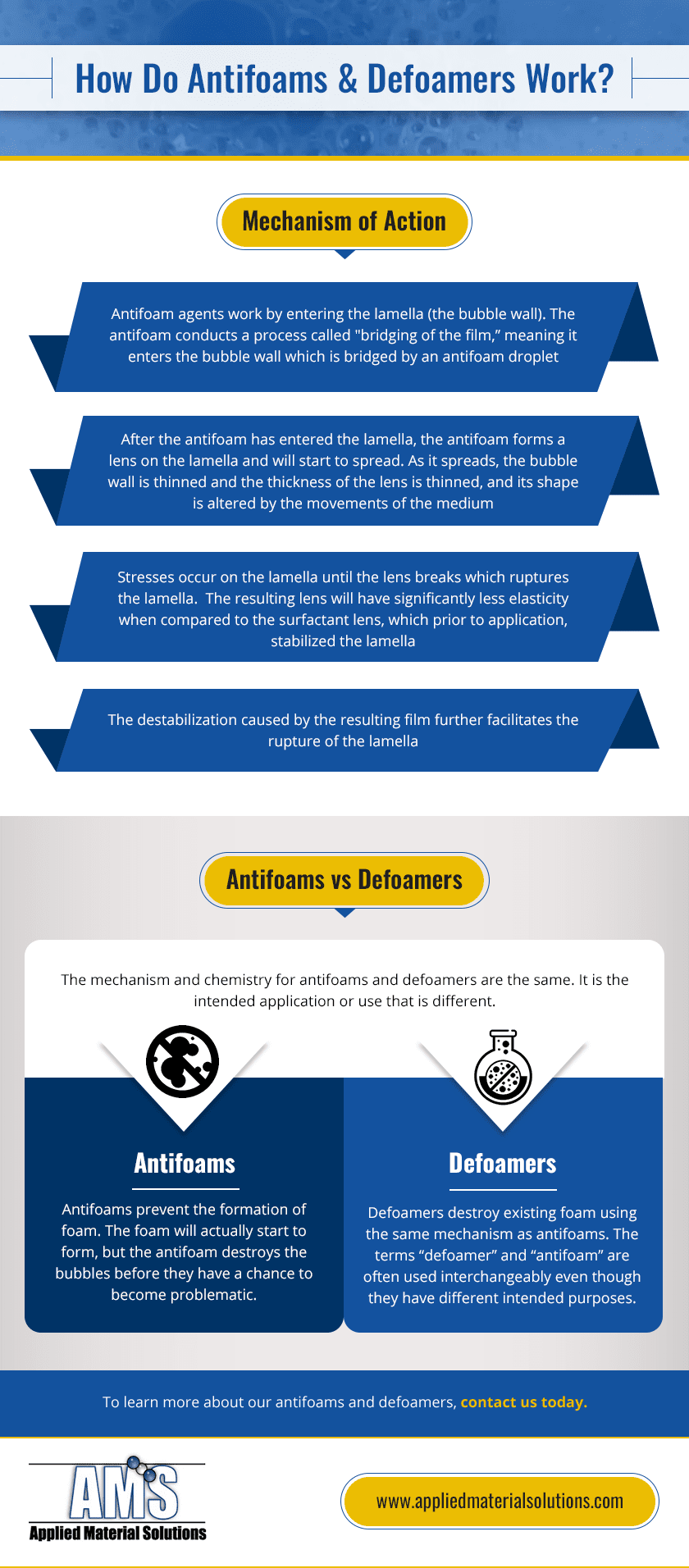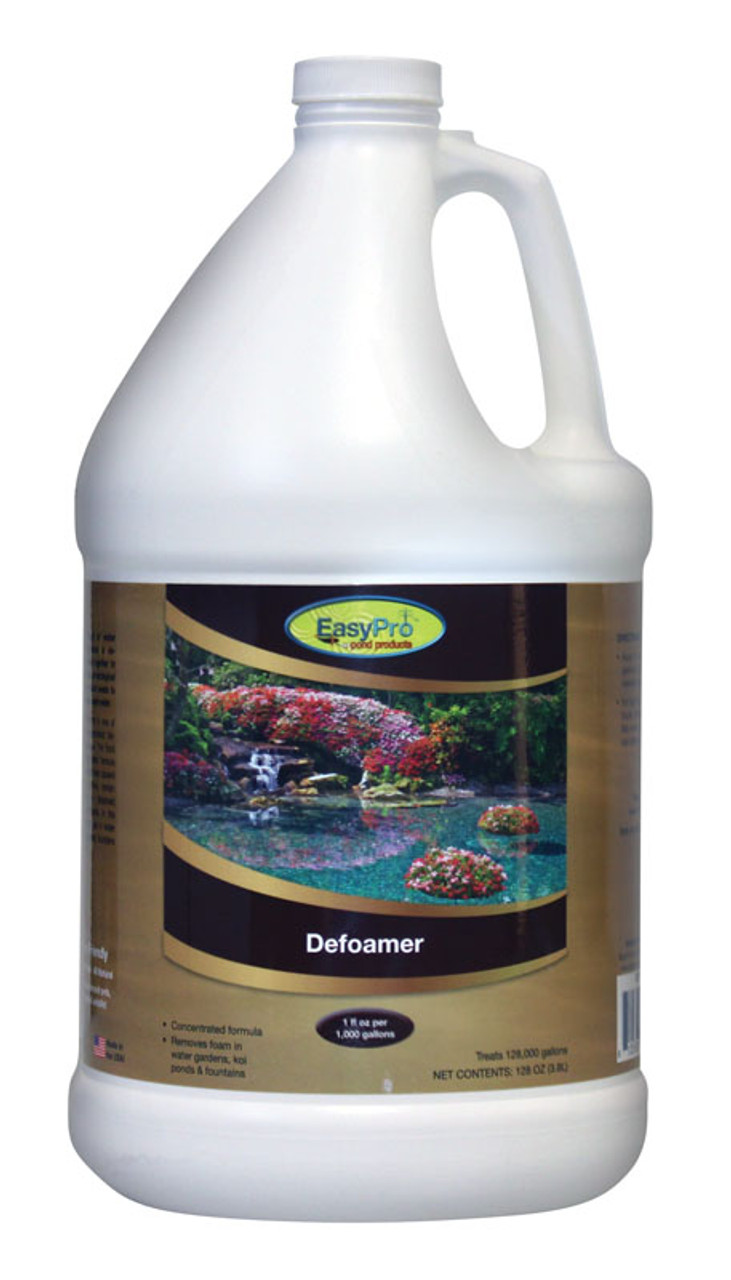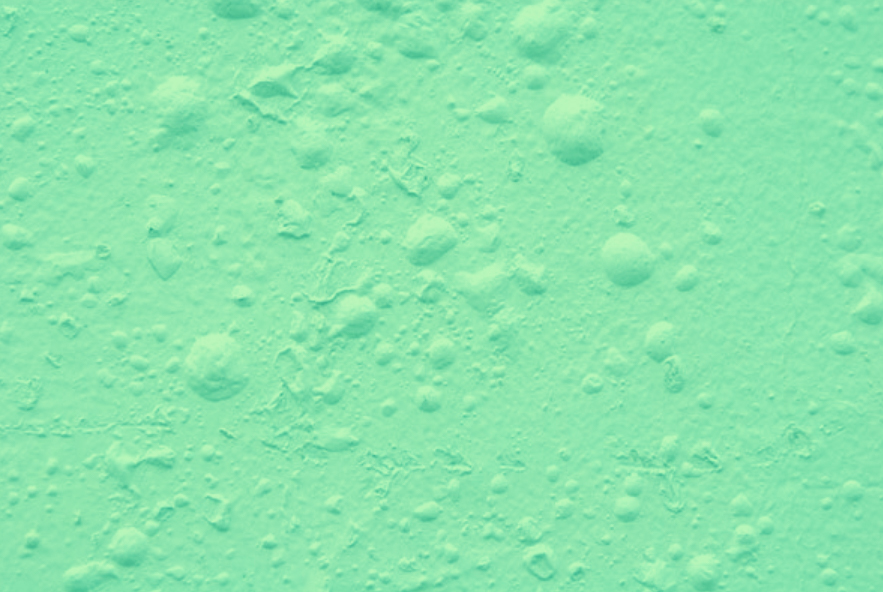Defoamers and Their Impact on Reducing Foam in Liquid Systems
The Role of Defoamers in Enhancing Product High Quality and Efficiency
In different manufacturing procedures, the visibility of foam can substantially impede item high quality and functional effectiveness. Defoamers function as essential ingredients that minimize this concern, making certain smoother manufacturing process while enhancing the functional and visual features of the last products (defoamers). Their application extends a plethora of sectors, from food and beverage to pharmaceuticals, where consistency and dependability are critical. The option of the appropriate defoamer can be vital to achieving optimum results, increasing important concerns about solution compatibility and efficiency metrics that warrant more exploration.
Recognizing Defoamers
Understanding the duty of defoamers is essential for maintaining item top quality across various markets. Defoamers are chemical ingredients made to lower and stop the formation of foam in liquid systems, which can negatively impact procedures such as mixing, filling up, and surface stress. Foaming can bring about ineffectiveness, product problems, and jeopardized aesthetic allure, making defoamers an essential element in producing operations.
In commercial applications, defoamers assist to enhance item consistency and security. In the paint and finishes industry, foam can conflict with the application procedure and the last surface. In food and drink manufacturing, extreme foam can hinder bottling and product packaging effectiveness. The effective use defoamers not only ensures smoother manufacturing processes yet also adds to remarkable product efficiency.
Furthermore, the option and formula of a defoamer have to line up with certain application requirements, such as compatibility with various other ingredients, efficiency under differing temperature level and pH conditions, and possible regulatory restrictions. Inevitably, understanding defoamers' functions and their relevance in various formulas is vital for enhancing manufacturing and ensuring the finest final product.
Kinds Of Defoamers
Defoamers can be classified right into numerous types based upon their structure and device of activity. The key types consist of silicone-based, non-silicone organic, and not natural defoamers.
Silicone-based defoamers are amongst one of the most effective, mainly because of their capacity to spread out promptly on the fluid surface area and interrupt foam development. Their one-of-a-kind chemical framework enables exceptional stability, making them appropriate for high-temperature applications and atmospheres with differing pH levels.
Non-silicone organic defoamers, commonly made up of all-natural oils or fats, are valued for their biodegradability and lower toxicity. These are normally made use of in food and drink applications where safety and ecological influence are extremely important.
Not natural defoamers, which consist of compounds like talc or calcium carbonate, act by enhancing the thickness of the fluid, thereby decreasing foam security. They are frequently utilized in industrial procedures where compatibility with other materials is not an issue.
Each kind of defoamer has distinct benefits and constraints, enabling tailored solutions depending on the details foaming issues encountered in various applications. Recognizing these distinctions is vital for maximizing efficiency and achieving wanted item top quality.
Applications Throughout Industries
Numerous sectors utilize defoamers to improve item high quality and operational performance. In the food and beverage sector, defoamers are essential in processes such as developing and dairy products production to protect against foam development, which can cause ineffectiveness and item variance. By controlling foam, producers can make sure better yield and an extra uniform product.
In the pharmaceutical industry, defoamers play an essential role in the solution of liquid drugs, where too much foam can hinder blending and accurate dosing. Their usage aids keep the stability of the solutions and assists in smoother production procedures.
The paint and finishings sector also depends on defoamers to improve the efficiency of products during application. By decreasing foam, these additives make sure a smoother surface and boost the aesthetic high qualities of the last product.

Advantages of Making Use Of Defoamers
While the application of defoamers differs throughout industries, their benefits constantly improve product quality and process efficiency. One substantial benefit is the reduction of foam formation during producing processes, which can otherwise result in production hold-ups and incongruities in item quality. By reducing foam, defoamers enable a smoother circulation of products, assisting in more reliable procedures and decreasing the likelihood of devices malfunctions.
In addition, the usage of defoamers can enhance the appearance and texture of last items. In industries such as coverings, paints, and food processing, too much foam can endanger the visual aesthetics and total high quality, while the appropriate defoamer application ensures a consistent surface view it now and desirable attributes. Defoamers can add to set you back savings by lowering waste during manufacturing and enhancing the usage of raw products.

Choosing the Right Defoamer
Choosing the best defoamer is vital for enhancing manufacturing procedures and making certain item high quality. The option of defoamer influences not only the efficiency of foam control however likewise the overall performance features of the final item. Variables to take into consideration consist of the sort of application, the chemistry of the formula, and the ecological conditions under which the product will be made use of.
Various industries might need certain defoamer types, such as silicone-based, natural, or polymeric defoamers. Recognizing the compatibility of the defoamer with the main active ingredients is important to stay clear of unfavorable reactions that can jeopardize item integrity. Additionally, the defoamer's performance in different temperatures and pH degrees need to be assessed to ensure regular performance.
Testing the defoamer in small applications can provide beneficial understandings into its performance and viability. Consideration of regulative conformity, particularly in food, drugs, and cosmetics, is vital in choosing a defoamer. Ultimately, a detailed more info here assessment of these aspects will certainly cause the selection of a defoamer that not just regulates foam efficiently however additionally improves the quality and performance of the last item.
Conclusion

In conclusion, defoamers are essential ingredients that dramatically enhance item top quality and efficiency across various sectors. The calculated option and application of defoamers lead to set you back savings, optimized source use, and increased customer contentment.
Frothing can lead to ineffectiveness, product issues, and jeopardized visual allure, making defoamers an essential component in making operations.
